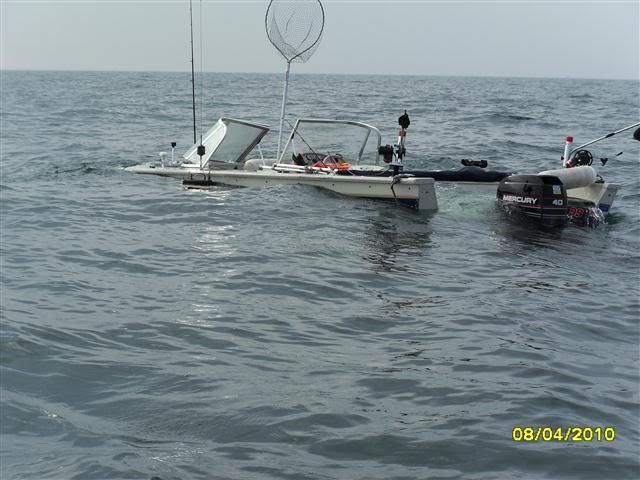Re: Using milk jugs as under deck floatation device
I think I have to weigh in on this subject. When I tore apart my '72 Reinell and found the saturated foam.....several hundred pounds......as well as the rotted wood......I did a lot of research. Even talked with several people at the Coast Guard Station in Newport, Oregon. There is a diference between what is 'by the book' and what is safe. 'By the book' is what boat manufacturers do for Coast Guard approval. It means when the boat is new, it won't sink......for a while anyway. The old foam we know is garbage. The closed cell foam....well, it just lasts longer, but you still end up with water that can't go anywhere, which equals rotted stringers/deck and more weight. (which will help you sink faster!) Before I went with my own theory and design, I talked it over with a few Coast Guard people. (They are the ones that explained the difference referenced above.) They also said that although my design couyldn't be Coast Guard Approved until it passed the necessary tests that manufacturers use......every one of them said if it was there boat, they would skip the foam and do what I had planned. (And make sure later owners know)
The design is simple. Every 24" in length, on the outside of the stringers, a chamber is created. So I have 9of these on each side. At the lowest level in each, I drilled a 1/2" hole through the stringer, filled with an epoxy/glass fiber mix....and redrilled to fit a 3/8" plastic pipe. Sealed in with 5200. The drain pipes are all routed to the rear bilge area, going through another bulhead that seals of the center section.....which has its' own small drain to the bilge area. The idea here is that 1) Any chamber that gets compromised will drain the water to where the bilge pump is, triggerring it to pump. 2) The pipe is small enough that a large rush of water is not possible. A hull rupture is no longer a fast sinking. I calculate I'd need to tear through 7 adjacent sections.....but even then, only those chambers would flood...the boat would simply lean a bit.
The back up is up under the gunwales. They are packed with as much foam, if not more, that what could be held under the deck. Easy to keep an eye on, to replace if needed......and in the event the whole hull is torn open the whole length and flooded, it's more than enough to keep the boat not only floating, but upright as well. (You'd be sitting in it up to your chest likely....but you'd be afloat!) I took the boat for the Coast Guard guys to check it out after I was done, along with pics of the construction......they said their personal opinion was that it far exceeds the requirements, and too bad they can't give an 'official certification.' The most difficult part was taping cardboard under the gunwales so the foam would be at a certain level. A few holes in the glass to fix, so you want to do this before final finishing/painting. As it is now, I wouldn't worry about a huge wave swamping the boat, or hitting a submerged tree stump.





















